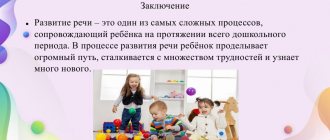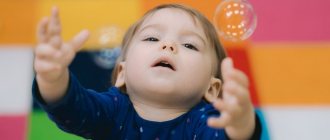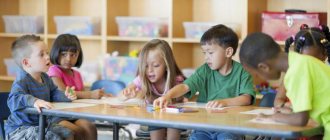LiveInternetLiveInternet
Author: Elena Yanushko, teacher, psychologist, speech therapist, author of about 200 methodological and practical books on the development and training of preschool children, author of the modern method of comprehensive development of preschool children “New Child”.
Effective speech development activities for young children (1-3 years old) using toy animals and their images
All parents want their child to speak well, so that his speech is correct and pure. Most modern parents are aware of the importance of an early age (from 1 to 3 years) for the formation of correct speech in a child. After all, during this fertile time for development, we can shape the baby’s speech, which is especially important for preventing delays in speech development.
How to develop the speech of a child of this age? There are modern methods for developing the speech of children from one to three years old. But in this article we will discover only some techniques for stimulating a child’s speech, namely, using his interest in the animal world.
The topic of learning about animals is very interesting for young children
.
It is not for nothing that in many children's fairy tales and stories the main characters are animals and birds, fish or insects. Almost all kids show genuine interest when they see a cat or dog on the street; they love to feed bread crumbs and seeds to pigeons and sparrows. Getting to know animals - their appearance, body structure, habits, babies - allows you to expand a child’s understanding of the world around him in an interesting and entertaining way and stimulates the development of speech. Therefore, in classes on speech development
with children 1–3 years old, it is advisable to use toy animals or pictures depicting animals.
It is better to start classes by using toy animals
. Approach the choice of toys carefully - it is better if they are small figures made of rubber or plastic: toys made from such materials are preferable to soft toys - they are more expressive in appearance, small in size, with a stable base (they do not fall or topple during play). Try to keep the toys in natural colors, stylized (that is, simplified in appearance), but at the same time clearly recognizable. Of course, they must be nice and kind.
Using toy animals, you can organize various games that are interesting for your baby and useful for speech development.
For example: Game “Who’s there?”
Target:
development of speech hearing - distinguishing onomatopoeia by ear.
Equipment:
toys - cat, dog, bird, horse, cow, frog, etc.
Progress of the game:
This game requires two presenters - one is behind the door, holds a toy and gives a signal, the other leads the game. There is a sound behind the door - the cry of an animal or bird (onomatopoeia: meow, aw-aw, pee-pee, i-go-go, mu, kwa-kwa, etc.), the adult listens and asks the child to listen and guess who is there, Behind the door. The child can answer in any available way - point to a picture of the corresponding animal, call it a word or an onomatopoeic word. A certain form of response should be required from the child depending on his speech capabilities.
- Do you hear someone screaming outside the door? Listen carefully. Who's there? Dog? Let's watch. The adult goes to the door, opens it and brings a toy. - Well done, you guessed right. Listen to who else is screaming there.
The game continues with other toys. If there is no second leader, then you can play this game by hiding the toys behind a screen. First, the adult speaks for the animals so that the child can see his face and articulation; next time he pronounces sounds behind a screen.
Game "Birds are talking"
Target:
development of active speech - the child’s independent use in speech of onomatopoeia KO-KO-KO, KU-KU, QUACK-QUACK-QUAK, KU-KA-RE-KU, CHIK-CHIRIK.
Equipment:
toys - chicken, cockerel, duck and other birds.
Progress of the game:
Invite your child to play birds. - Let's play birdies. The birds met in a clearing and began to talk. KO-KO-KO - says the chicken. KOO-KOO! KOO-KOO! - the cuckoo screams. QUEACK-QACK-QACK! - the duck quacks. KOO-KA-RE-KOO! - the cockerel crows. CHICK-CHIRIK - the little sparrow chirps. So we talked!
Encourage your child to repeat the birds' conversation after you. When pronouncing onomatopoeia, make sure that the baby pronounces them in one exhalation and does not take in air while pronouncing.
In a similar way, you can play the game “On the Farm”, in which we encourage the child to pronounce the onomatopoeia of domestic animals - horse, cow, pig, goat, sheep.
Game "Guests"
Target:
development of imitation of adult speech - repetition of onomatopoeic words KNOCK-KNOCK, KO-KO-KO, AV-AV, MEOW, MU, GA-GA-GA, QUACK-QUACK, I-GO-GO, etc.;
words CHICKEN, DOG, CAT, COW, GOOSE, DUCK, HORSE, etc.; phrases WHO IS THERE, DOG AV-AV, CHICKEN PECKING, etc. Equipment:
toys (soft or rubber): chicken, dog, cat, cow, goose, duck, horse, etc.
Progress of the game:
Together with your child, build a “house” of cubes in the form of a corral (you can make a house from a box or other suitable materials) and offer to play the game “Guests”.
- This is how wonderful our house turned out - big and beautiful! Who came to visit us today? KNOCK KNOCK! Who's there? (the toy is not visible) MEOW! Who guessed it? That's right, CAT. Come, cat, and visit us. Let's talk to the cat in her cat language: MEOW! - KNOCK KNOCK! Someone else came to visit us...
The game continues with the next character. Encourage your child to repeat onomatopoeias, words and phrases after you. To do this, highlight the words proposed for repetition in speech, ask questions.
The description of the game suggests a variety of characters, but their number, composition and duration of the game should be varied flexibly depending on what toys you have available. For example, you can use a donkey - IA, a goat - BE, a pigeon - GULI-GULI, a crow - KAR, a mouse - PI-PI, etc. The main thing is that these characters make screams that can be imitated.
We advise you to change characters and gradually increase the number of “guests”. If your baby shows signs of fatigue and loss of interest, end the game. This game can be repeated many times.
You can continue working on speech development by using pictures of animals.
Moreover, pictures can depict not only animals and what they do. The selection of pictures for games with the little ones must also be approached carefully: images of animals should be accessible to children’s perception - these are simple images with clear contours and carefully drawn characteristic details, the images are stylized, that is, somewhat simplified. This is due precisely to the peculiarities of children's perception: children perceive a simple drawing better, because a real animal can frighten a child with its unpredictable behavior, and the image of an animal in a photo or video does not always allow important details to be seen. Here are examples of animal images that can be successfully used in classes with young children:
How to work with pictures? Show your child a picture of an animal, name it and tell about it (a few simple phrases); it is especially useful to use onomatopoeia during the story - the sounds that the animal makes. Below, as an example, are some approximate options for verbal commentary on pictures depicting domestic and wild animals of our country. Pets
Hen:
This is a chicken. The chicken pecks the grains: “Peck-peck!” The hen calls the chickens: “Ko-ko-ko!” And the little chickens answer: “Peep-pee-pee!”
Duck:
Here's a duck. The duck swims in the water: “Glug-glug!” The duck calls the little ducklings: “Quack, quack!”
Cat:
Once upon a time there lived a mother cat. But her children are fluffy kittens. The kitten meows loudly: “Meow! Meow!" Let's call the kitty: “Kitty-kitty!”
Dog:
This is a dog. The dog guards the house. She can bark: “Woof! Woof! and wag your tail. The mother dog has little puppies. They play and jump merrily: “Jump-jump!”
Cow:
Here is a cow grazing in a meadow. There is lush green grass around. The cow chews delicious grass and moos: “Moo!” Mu! Milk for anyone?
Horse:
There's a horse here. She lives in a stable. The horse can shout loudly: “I-go-go!” The horse gallops and clatters its hooves: “Hop, hop!”
Pig:
Once upon a time there lived a mother pig. The pig grunts loudly: “Oink-oink!” Here are the baby pigs. Piglets playing in a puddle: “Splash-splash!”
Goat:
This picture shows a goat. The goat says: “Meh!” A goat has horns and hooves. What are the names of the goat's babies? Little goats.
Wild animals
Fox:
A fox lives in the forest. She is red and fluffy. What kind of tail does a fox have? Long. The fox is cunning and dexterous. Who does the fox catch? Bunny.
Wolf:
Here is a gray wolf - clicking his teeth. He is a hunter. Scary wolf? Yes, it's better not to get caught by the wolf. At night the wolf howls: “Oooh!”
Squirrel:
What kind of furry animal is this? The squirrel lives in a tree and can jump on branches: “Jump-jump!” The red squirrel loves nuts and cones.
Hedgehog:
And this is a hedgehog. He is not afraid of anyone because he has sharp needles.
Hare:
Here's a bunny. The hare has long ears and fast legs. He runs away from the fox and the wolf.
Bear:
Which forest animal loves sweet honey? Bear. He walks through the forest and roars: “Y-y-y!” The bear is shaggy and club-footed. He is very strong.
Owl:
The owl sleeps during the day and flies at night, scaring animals.
“Uh-uh!” - the owl hoots. Cuckoo:
The cuckoo cries: “Cuckoo!”
Continuing classes
, you can study animals from different countries and seas: elephant, giraffe, hippopotamus, zebra, lion, tiger, kangaroo, parrot, pelican, crocodile, boa constrictor, monkey, whale, seal, penguin, etc.
While playing with pictures, try to be emotional and infect your baby with your positive emotions. Also use in game
the baby’s desire to imitate an adult, repeat words and actions after him - unobtrusively encourage the child to repeat sounds, syllables, words and short phrases, as well as some characteristic animal movements - jump like a bunny, waddle like a bear, flap his wings like a bird, gallop like a horse etc.
I advise using animal material to gradually and purposefully develop, expand and complicate the baby’s active speech. For example, studying a picture of a cow. First step
– the child’s repetition of the onomatopoeia “mu.”
The second step
is to repeat the name of the animal “cow”.
The next steps are to pronounce phrases of varying degrees of complexity: “This is a cow. The cow is grazing. Horned cow. She gives milk. The cow is chewing green juicy grass.” We recommend using the same algorithm
to study images of other animals.
From everything described above, it becomes clear that using the “Animals” theme in classes on speech development for children requires serious preparation - it is necessary to select toy animals and pictures with their images in sufficient quantity and the required quality, which corresponds to the psychological characteristics of young children. Often busy modern parents do not have enough time for such serious preparation for speech development classes. What to do? There is an exit! Especially for parents of young children and specialists who work with young children, a series of books on the development of speech in children has been developed as part of the “New Child” project.
. This series is designed in such a way that even untrained people can practice it.
To the subseries
books devoted to the development of speech in children from 1 year to 2 years old include a large number of books about different animals (domestic, wild, exotic, marine), for example, “1+ My Favorite Animals”, “1+ Who hiding under the Christmas tree", "1+ Come to the zoo!", "Underwater world and small world", "1+ Little stories about the Kitten", "2+ Bunny and his friends", "2+ What can the Bunny do?" and others.
These books will teach parents how to properly engage with their baby in speech development. Each page contains:
- Attractive illustration
, created taking into account the peculiarities of the baby's perception. - Interesting information about animals
that enrich the child’s understanding of the world around him. - Additional tasks
are to play an interesting game, repeat a given movement after an adult, show a detail in a picture (this gives the child the opportunity to be active and move around during the lesson). These tasks enliven work with the book, and you can complete them according to your mood. - Texts of different difficulty levels
:
In frame
– the simplest version of words (light words), which we immediately offer to the baby for repetition.
Under the picture
there is a simple short text for reading to a child over 1 year old (the simplest phrases are highlighted in font size).
Above the picture
there is text for reading to a child aged 1.5 years and older. If you wish, you can add your own interesting details to this story.
I advise you to use all the opportunities and wish your kids success in their speech development!
Source
What should mom do?
By “infecting” the baby with positive emotions, the mother stimulates his interest in the outside world, and since the satisfaction of this interest involves the expenditure of physiological resources, she stimulates in a certain direction both metabolic processes and tissue differentiation in the body of her baby. On the contrary, by transmitting negative emotions to the baby, we suppress not only his interest in the outside world, but also certain biological processes of his body. It is no better when the adults around the child “infect” him with too strong affective emotions.
These energy-intensive emotions deplete the child’s nervous system and can lead to somatic diseases. An adult’s mechanical fulfillment of routine tasks, his indifferent, indifferent attitude towards a small child excludes the possibility of any kind of emotional contact at all. With such an adult, the child does not have the need to communicate, and therefore does not develop cognitive experience and does not form the necessary communicative-cognitive means. There is a threat of delayed mental development and disruption of the child’s further interaction with adults. The child’s brain develops incorrectly or is delayed in the absence or deficiency of external stimuli.
And, vice versa: interest in an adult, curiosity about the outside world and communicative-cognitive activity are caused and supported, as we have seen, by positive emotions emanating from an adult. Therefore, we can repeat once again that for infancy, the emotional communication of a child with an adult is not a luxury, but a primary necessity, a condition for the formation of his psyche according to the human social type. Depriving an infant of the emotional attention of an adult at this early age leads primarily to abnormal development of the child’s personality.
If parents notice trouble, and this is not one symptom, but several (lack of babbling, humming, change in voice, behavior), then you should contact a specialist. And then, along with speech therapy correction (massage, articulation gymnastics, stimulation of vocal reactions), drug treatment, physiotherapy, etc. are prescribed.
About organizing classes
The development of a child’s speech occurs at every moment of his life. Everyday situations, including getting ready for bed, washing, eating, take place under almost the same conditions. This helps enrich children's vocabulary and strengthen their speech skills. Contacting children for various reasons creates their need for communication. At the same time, it is necessary to more actively use play and everyday situations that are pleasant for the child. For example, when washing or bathing a child, you can hum a composed song as you go, drawing the baby’s attention to the parts of the body and face about which it is sung, with a gentle touch:
- Where, where, where, where, where are our hands? (2 times)
- Here they are, here they are, here are our hands. (2 times)
- Where, where, where, where, where are our legs? (2 times)
- Here they are, here they are, here are our legs. (2 times)
- Where, where, where, where, where is our tummy? (2 times)
- Here it is, here it is, here is our tummy. (2 times)
- Where, where, where, where, where are our eyes? (2 times)
- Here they are, here they are, here are our eyes. (2 times)
- Where, where, where, where, where are our cheeks? (2 times)
- Here they are, here they are, here are our cheeks. (2 times)
The mother's affectionate voice and pleasant stroking movements will stimulate the child's independent vocal reactions.
Just communicating with your baby in everyday life is not enough for his development. It is necessary to use speech in objective and play activities. It is also advisable to conduct specially organized classes (games and activities). It is important to consider that at an early age, all tasks given to the child should be offered as an entertaining and interesting game. Only against a positive emotional background will the baby himself want to say a new word, repeat a combination of sounds or a phrase he heard.
When learning new words, you should always use a toy or object first and then a picture. If the child easily recognizes and names familiar objects and toys, you should gradually move on to working with subject and plot pictures.
Speech therapist, neurodefectologist Elena Gennadievna Timoschenko, author of the Territory of Health series of lectures “Early development of speech and intelligence of a child.”
How to stimulate speech development
The sooner trouble is noticed in the development of a child’s speech and the sooner specialists begin working with him, the better the results achieved will be: the reserve capabilities of the brain are especially high at an early age, during the period when speech is actively developing.
At the stage of pre-speech development (1-3 months), it is necessary to stimulate motor and communicative functions, develop and consolidate the child’s need to communicate with adults, strengthen the ability to fix gaze and follow a moving object. Gradually move on to active stimulation of fine motor skills. If there is no humming or impaired vocal reactions at this stage, the doctor may prescribe, along with drug therapy, speech therapy correction (facial massage, breathing and articulation exercises). At the 3rd stage of pre-speech development (3-6 months), the baby manipulates toys, pulls them into his mouth, rolls over and crawls towards an object that interests him, throws toys and follows their movement. In cases where there is a delay in pre-speech skills, it is advisable to carry out their targeted stimulation. For example, create situations that cause the child to laugh, roar, as imitation reactions. If necessary, speech therapy correction may consist of active speech therapy massage and activities aimed at developing babbling. At the 4th stage (6-9 months) and the 5th stage (9-12 months), the possibilities of speech therapy assistance expand.
Along with active massage and gymnastics, they begin to stimulate tongue movements, chewing movements, and lip movements. Stimulate the ability to recognize the intonation coloring of spoken speech. Stimulation of babbling and initial syllable formation is carried out with the help of appropriate imitative or imitative games (“Ladushki”, “Goodbye”, “The geese flew - they sat on their heads..”, etc.) The effectiveness of speech therapy correction of pre-speech disorders cannot be carried out without active stimulation of mental development. After 6 months, the child is stimulated to perform purposeful actions with various objects, stimulate repeated actions, and meaningfully communicate with adults. From the second half of a child’s life, they are taught to handle and manipulate objects.



